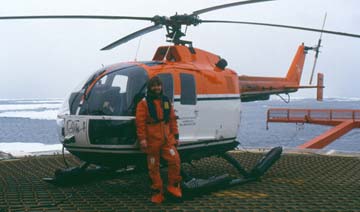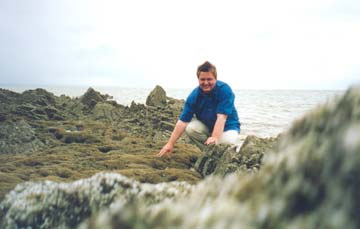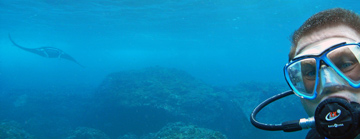|

Always in action: Heavenward,

on earth, and

under water.
|
|
EXPERTISE
-
Interdisciplinary
ecosystem research with experience in more than 100 research and development projects, -
Advisory
services for administrative authorities as well as for research
institutes, NGOs and companies -
Cooperation with
journalists on current environmental issues, in particular invasive
species and warfare-related hazardous sites
in the seas
and
-
Reviewer for international
project proposals and for twenty scientific journals (u.a. Botanica
marina, Estuaries, Journal of Plankton Research, Journal of Sea
Research).
|
Currently, I am
mainly concerned with the following three topics: |
|
 Invasive alien species
Invasive alien species |
|
|
The colonisation of new
habitats by alien species has always been part of natural
evolutionary processes. Today, however, anthropogenic vectors (shipping,
canals, imports, etc.) increasingly enable the overcoming of natural
barriers to dispersal, resulting in an increased introduction of
alien species. Globally, 'alien species' are considered one of the
greatest threats to biodiversity.
My professional focus:
|
 Warfare-related hazardous sites in
the seas
Warfare-related hazardous sites in
the seas |
|
|
Direct acts of war
resulted in large quantities of explosive ordnance entering the seas.
In addition, directly after the end of both World Wars, a total of
around 2 million tonnes of conventional ammunition as well as
smaller quantities of chemical warfare agents were dumped in the
German coastal waters of the North Sea and the Baltic Sea.
To this day, accidents
with these munitions have occurred time and again, especially among
beach visitors and fishermen. Many explosive ordnance found also
show clear corrosion damage with small to large leaks, resulting in
the continuous release of considerable quantities of pollutants.
However, their effects on the environment and humans have been
insufficiently studied so far.
My professional focus:
|
 Underwater archaeology
Underwater archaeology |
|
|
Underwater archaeology is
an exceptionally multifaceted discipline of ancient research. Every
diver can come into contact with it unexpectedly, as many unknown
cultural assets are still waiting to be discovered in our rivers,
lakes and coastal waters.
In order to protect and
research our cultural heritage, I regularly participate, a.o., in
professional excavation campaigns of Roman and medieval wrecks in
the Adriatic Sea as a member of the Association for the Promotion of
Underwater Archaeology (FUWA e.V.) in cooperation with the
University of Zadar in Croatia.
My professional focus:
|
|
|